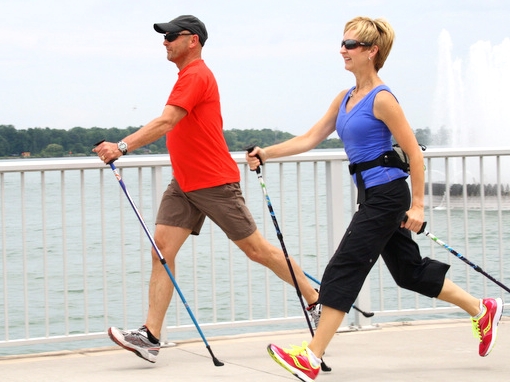This is Canada's Best Gym!
Late autumn in High Park, Toronto
"You don’t have to go fast. You just have to go."
Sugar: The Bitter Truth
"Action is the antidote to despair." Joan Baez
Best Intentions Gone Wrong
Lose 5 Pounds by Hardly Trying
Ready to Transition?
Could Push-ups Foretell Your Future Health?
I Know If You’re a Professional Writer
Finally, Warm Hands!
6 Signs Your Personal Trainer is Awesome
Would You Play Tennis with a Badminton Racquet?
Feet Don't Fail Me Now
You Can't Make Friends With a Treadmill
How to Make Four Good Exercises Great
Plank - Once you have your body in a long straight line, without moving your hands, rotate your hands outwards and into the floor as if you were tightening two jars. This will automatically rotate your elbows in slightly, and squeeze your shoulder blades together. Then tuck in your ribcage, press your shoulders away from your ears, and press your heels way back. And lastly…press your feet and legs outward and feel your glutes suddenly contract. Now you've got almost every muscle activated, and your standard plank is a full-body/high-tension plank. (Quick check: Is your head aligned? See Push-ups below.)
Push-ups - Before you start and during each repetition, be sure you maintain a straight line from your heels all the way to the top of your head. Many people let their heads hang. This is a common mistake because dropping the head makes the exercise easier. A hanging head also reinforces the dreaded "forward head poke" posture (caused by peering at our cellphones and screens). For push-ups, and almost every other exercise, keep your ears continually aligned over your shoulders.
Hamstring stretch - Whether you're stretching your hamstrings from a seated or standing position, keep your back straight as you hinge forward from your hips. In the Jane Fonda era, the rounded back and nose-reaching-for-the-knee approach was standard . But today we know that hip hinging with a straight back gives a superior stretch and also helps us practise good upper body posture.
Biceps curls - There's more to curls than just lifting the weights up and down. Before you start, pull your navel in and lift your ribcage to brace your core. Relax your shoulders. Then hold an imaginary piece of paper between each upper arm and your torso. As you curl the weights up and lower them down, don't drop the paper! There’s no need to tap your shoulders with the weights (in fact, it’s impossible if you’re holding onto imaginary pieces of paper). This approach isolates your biceps muscles and prevents additional muscles and momentum from helping out.
This Idea is Brilliant
A Picture's Worth a Thousand Words
When a Workout Changes Your Life
Are You Really Nordic Walking...or Just Walking With Poles?
When I'm out leading a class of happy Nordic walkers or teaching a one-on-one lesson, we frequently pass another person or group also cheerily enjoying a workout with poles.
After a friendly hello as we pass by, our conversation inevitably turns to a critique of the other Nordic walkers' (almost always) poor technique:
bent elbows
poles vertical and in front of the body
poles too long or too short
no propulsion
hiking poles instead of Nordic walking poles
schlumpy posture
short little steps, etc.
These encounters are actually a great learning opportunity for my participants (recognizing errors is a great confidence booster). But I find it disheartening that so few people learn to use their poles properly.
Just one lesson or clinic is all that's required for most people to understand the basics of Nordic walking. Without some rudimentary instruction and feedback most people end up simply walking with poles, using them the same way they would hiking poles.
They don't realize that hiking poles (also called trekking poles) are used to minimize effort when walking, while Nordic walking poles are used to maximize effort and to challenge almost every muscle in the body.
If you're curious about the Nordic walking workout, take the intelligent approach and connect with a certified Nordic walking instructor.
She or he can help you with:
choosing the right poles
setting telescoping-style poles to the proper length for you
understanding the Nordic walking technique, coordination and rhythm
maintaining proper posture
modifying the intensity up or down
troubleshooting any issues
and much more



















